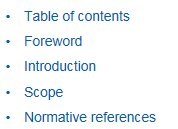IEC 60079-10-2:2015
Explosive atmospheres - Part 10-2: Classification of areas - Explosive dust atmospheres
Note: a redline version of this publication exists
IEC 60079-10-2:2015 RLV
Abstract
IEC 60079-10-2:2015 is available as IEC 60079-10-2:2015 RLV which contains the International Standard and its Redline version, showing all changes of the technical content compared to the previous edition.
IEC 60079-10-2:2015 is concerned with the identification and classification of areas where explosive dust atmospheres and combustible dust layers are present, in order to permit the proper assessment of ignition sources in such areas. In this standard, explosive dust atmospheres and combustible dust layers are treated separately. In Clause 4, area classification for explosive dusts clouds is described, with dust layers acting as one of the possible sources of release. In Clause 7 other general considerations for dust layers are described. The examples in this standard are based on a system of effective housekeeping being implemented in the plant to prevent dust layers from accumulating. Where effective housekeeping is not present, the area classification includes the possible formation of explosive dust clouds from dust layers. The principles of this standard can also be followed when combustible fibres or flyings might cause a hazard. This standard is intended to be applied where there can be a risk due to the presence of explosive dust atmospheres or combustible dust layers under normal atmospheric conditions. Please refer to the foreword of the document for a detailed listing of the significant technical changes from the previous edition. Keywords: explosive dust atmospheres, combustible dust layers, ignition hazards
IEC 60079-10-2:2015 is concerned with the identification and classification of areas where explosive dust atmospheres and combustible dust layers are present, in order to permit the proper assessment of ignition sources in such areas. In this standard, explosive dust atmospheres and combustible dust layers are treated separately. In Clause 4, area classification for explosive dusts clouds is described, with dust layers acting as one of the possible sources of release. In Clause 7 other general considerations for dust layers are described. The examples in this standard are based on a system of effective housekeeping being implemented in the plant to prevent dust layers from accumulating. Where effective housekeeping is not present, the area classification includes the possible formation of explosive dust clouds from dust layers. The principles of this standard can also be followed when combustible fibres or flyings might cause a hazard. This standard is intended to be applied where there can be a risk due to the presence of explosive dust atmospheres or combustible dust layers under normal atmospheric conditions. Please refer to the foreword of the document for a detailed listing of the significant technical changes from the previous edition. Keywords: explosive dust atmospheres, combustible dust layers, ignition hazards
Additional information
| Publication type | International Standard |
|---|---|
| Publication date | 2015-01-16 |
| Edition | 2.0 |
| Available language(s) | English/French, Spanish |
| TC/SC | TC 31/SC 31J - Classification of hazardous areas and installation requirementsrss |
| ICS | 29.260.20 - Electrical apparatus for explosive atmospheres |
| Stability date | 2024 |
| Pages | 56 |
| File size | 1294 KB |
The following test report forms are related:
More information
Share this page
Share your publications
Learn how to share your publications with your colleagues, using networking options.
Payment information
Our prices are in Swiss francs (CHF). We accept all major credit cards (American Express, Mastercard and Visa, JCB and CUP), PayPal and bank transfers as form of payment.
Keep in touch
Keep up to date with new publication releases and announcements with our free IEC Just Published email newsletter.
Contact customer services
Please send your enquiry by email or call us on +41 22 919 02 11 between 09:00 – 16:00 CET Monday to Friday.

